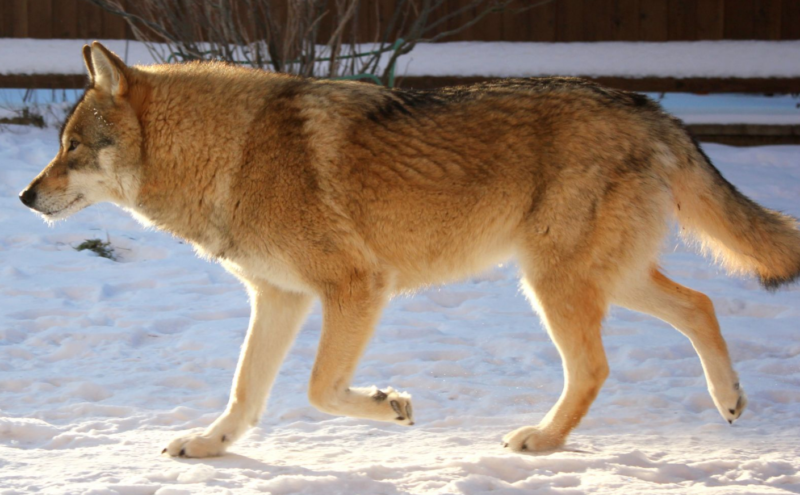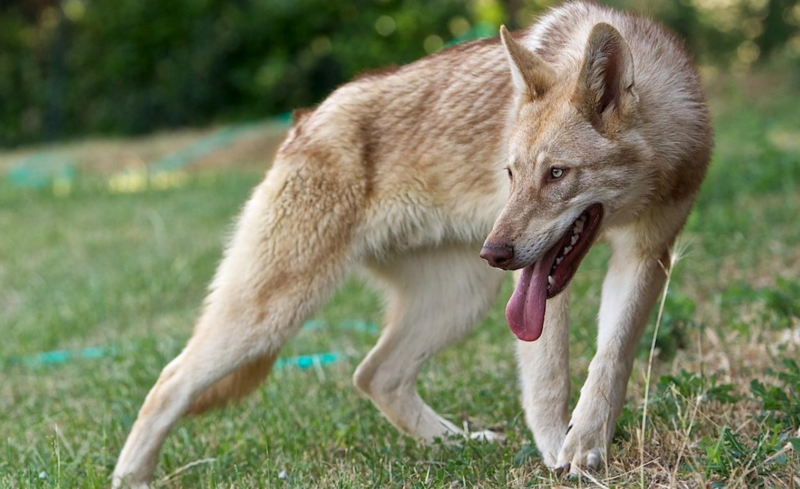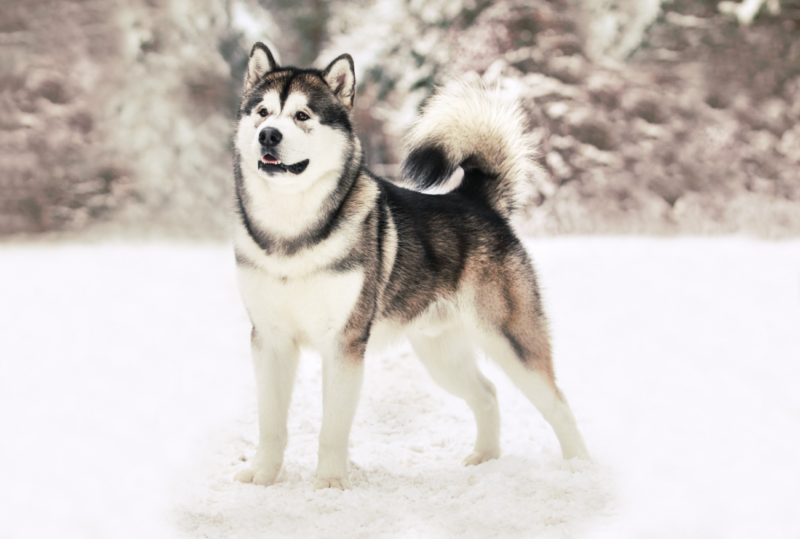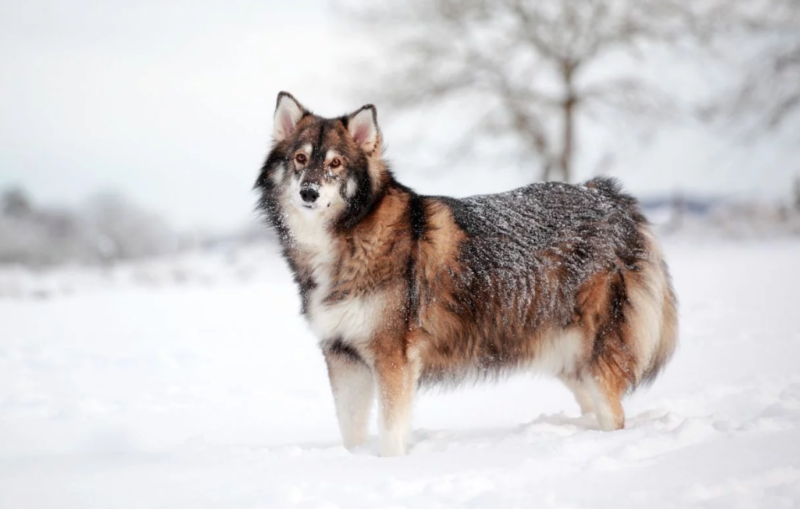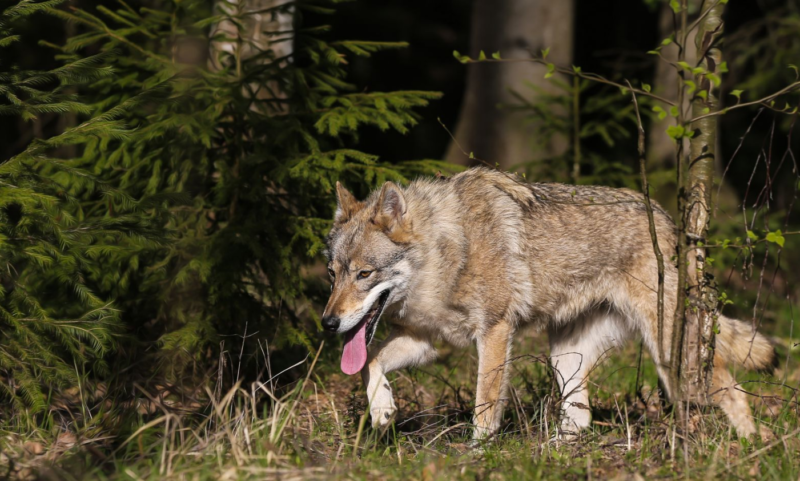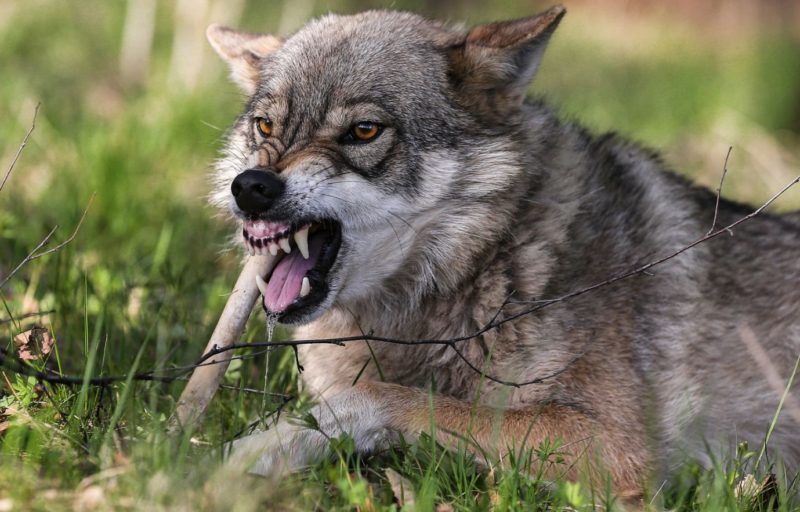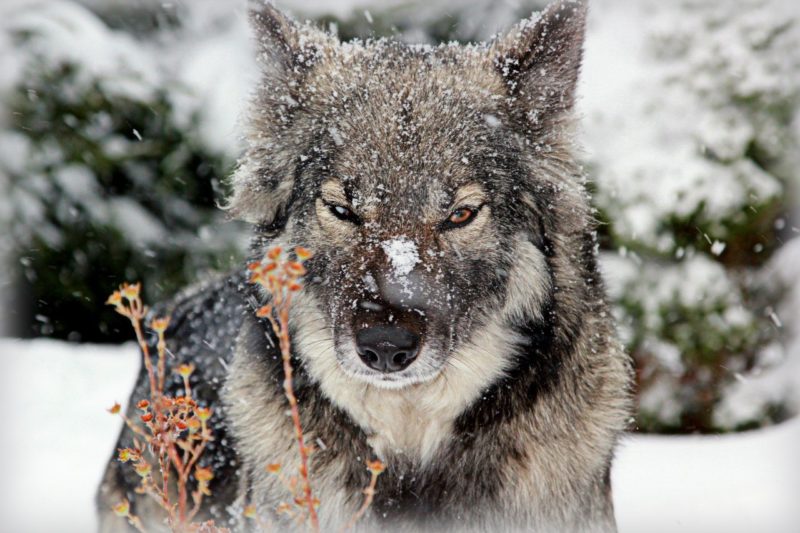The breed is currently not officially recognized by dog handlers. The wolf and dog hybrid is a hardy and intelligent animal, suitable for security and military service. If you want to get such a dog, a person should know the features of its character, education and content.
Material Content:
History of occurrence and general characteristics
The breed was bred at the end of the twentieth century, but many attempts were made to get a cross between a wolf and a dog. Crossing a German shepherd and a she-wolf allowed to breed a new breed - Perm Wolfhound. The name is based on the place of origin of the animal - the Perm Institute of Internal Troops.
Dog handlers decided to cross the wolf with a dog in order to bring out an individual capable of protective activity, as well as the search and trapping of violators. Currently, the International Cynological Federation has not yet recognized this breed.
The she-wolf with which the shepherd dog was tied was domesticated and lived among people. This is an important condition for successful crossbreeding, as a wild wolf will perceive a person and dogs with aggression and even be able to bite a partner.
The external characteristics of hybrid breeds are slightly different from wild wolves and may vary depending on the breed of the dog.
The maximum size of the wolf breed:
- males - height 60 cm, weight 50 kg;
- bitches - height 55 cm, weight 40 kg.
As a rule, externally bred dogs look like wolves in gray. But some breeds acquire white, black or brown coat color.
Hybrid species are distinguished by a strong physique and strong paws.A cleft bite and a well-developed jaw make them quite dangerous. Wolfhounds live longer than ordinary dogs and do not become attached to the owner. Thanks to a sharp sense of smell, endurance and a developed mind, the wolf man becomes an ideal assistant to the policeman.
Description of hybrid breeds of dog and wolf
The main breed is the wolf dog of Sarlos. It was registered in the Netherlands in the 60s. Representatives of this species have a strong physique. The woolen coat and the nature of the dog’s movements strongly resemble their wild counterparts.
Sarlos’s wolf dog is capable of independent decision making, it is highly active and stamina. That is why this breed is often chosen for rescue operations and used on the hunt.
These animals are more than all other wolf species devoted to the owner. From their ancestors, they got the ability to navigate in an unfamiliar area and choose the safest road. The wolf dog of Sarlos perfectly suits the role of guide.
The second known hybrid breed is the Czechoslovakian Wolf Dog. She was taken out in a nursery, which prepared the breed for military service. The first puppies that appeared were used to guard the border in England.
The Czechoslovakian has sharp ears, amber eyes and yellow-gray color. Cowardly specimens of this breed are considered marriage. Dogs have a passion for hunting, they are easily socialized among people.
Both breeds are recognized by the IFF in the group of shepherd and cattle dogs. These are the only species of wolf breeds officially registered in Russia.
Features and Features
The nature and temperament of such a hybrid depends on the percentage of prevalence of wolf DNA. Each dog has its own character traits and physical abilities.
Representatives of the species obtained as a result of crossing a wolf and a dog retained incredulity to humans, caution. All breeds show the habits of a wild beast, such as hunting, aggressiveness in enclosed spaces, digging holes.
The "union" of the wolf and the dog had great risks, but scientists decided to experiment.
As a result, a new individual appeared, which is distinguished from an ordinary dog by the following qualities:
- Acute sense of smell. Hybrids are able to capture almost all odors and can even distinguish between the blood of a healthy and cancerous person. They smell the track in a few seconds.
- Life span. Wolfhounds are distinguished by their longevity, their eyelids can last up to 30 years, while ordinary dogs rarely reach up to 20. The same indicator for wild wolves is about 40 years.
- Power and strength. The jaw in hybrid breeds is distinguished by a "steel" grip and is developed more than in dogs, and the teeth of wolf-dogs are stronger and stronger.
- Attachment. Wolfhounds do not experience such feelings for people and will not miss the owner, unlike an ordinary dog. Feelings and brain activity of the dog are fully directed to the performance of official duties.
The features of hybrids also include a developed mind, a unique character, quick wit and a beautiful appearance.
Dog breeds similar to wolves
Wolf-like breeds are recognized by the international cynological organization. They are suitable for those who want to have a pet that looks like a wild wolf, but has a good canine character.
Recognized breeds resembling wolves include:
- Alaskan Malamute. Sled dog that was bred by the Eskimos. The dog needs regular exercise and long walks. They love children and are strongly attached to the family.
- Siberian Husky. Another sled breed, characterized by a pronounced instinct for the hunter. But in real life they are not suitable for security and hunting activities. The dog needs physical activity, therefore, in the North, huskies become participants in tobogganing.
There are breeds with the appearance of a wolf that have not yet been evaluated by the IFF:
- Tamaskan dog. Hybrid of Siberian Husky, Malamute and German Shepherd, bred in Finland.Family breed, characterized by endurance and excellent service qualities.
- Northern Inuit. The result of crossing a German shepherd and a husky dog is a large dog that looks like a white wolf. Dogs are calm and even. Often representatives of this breed play the roles of wild wolves in films.
- Utonagan. Another cross between driving and service types. The dog has a powerful undercoat that allows them to live in severe frosts. They are known for good appetite, so you need to monitor the diet.
There are two more recognized IFF breeds mentioned above: the wolf dog Sarlos and the Czechoslovakian wolf dog.
Care, health and feeding
Wolfhounds are freedom-loving animals that are not intended to be kept in an apartment. If they are not given the necessary physical activity, they will smash the house and spoil things.
Hybrids cannot be kept on a chain. They are more suitable for a spacious warm enclosure and freedom of movement. If you restrict the dog, it can become embittered and show aggression on the owner. The floor of the room should be covered with an iron mesh, as wolfhounds love the will and often do undermining.
Hybrid breeds do not need special care. They do not need to be washed and combed daily. During molting, it is enough to use the furminator to give the wool an aesthetic appearance.
The main condition for the animal’s nutrition is a balanced diet. It is not recommended to use dry food, abuse sweets. Wolfhounds love to nibble brain bones.
The daily menu of dogs at the Perm Institute:
- Kashi - 700 g.
- Meat - 500 g.
- Vegetables - 200 g.
A cross between a wolf and a dog needs raw meat and fresh fish. These products are recommended to be given regularly.
Constantly monitor the health of the pet. It is required to check the eyes and ears, to control the color change of the mucous membranes and the condition of the coat.
Parenting and training
Wolfhounds perceive information faster than a German shepherd. They have a high level of thinking, they are pretty smart.
Hybrid breeds are dominant, which is in their blood.
The dog obeys will only become an imperious master, but at the same time he will regularly try to take the role of leader. The owner, on the other hand, should show character without showing fear.
In the process of education, physical punishment is unacceptable. Such an effect will embitter the dog, and he will want revenge. If the dog persistently shows dominance, it is necessary to take the animal by the withers, shake and lay on his back.
Wolfhounds submit to training and quickly grasp the trainer's settings. Classes should be carried out with the help of a professional dog handler who understands the psychology of dogs. If education is left to chance, a dangerous and uncontrollable predator will grow out of it.
Pros and cons of the breed
Choosing this breed, it is necessary to understand the purpose for which the animal is acquired.
The advantages of the wolf breed are:
- endurance;
- sharp mind;
- developed sense of smell;
- bravery;
- fearlessness.
The disadvantage of this breed is recognized as possible aggressiveness. Most often, it manifests itself if the dog is dominated by wolf blood (more than 25%). Malice can be removed with the right approach to training.
Conclusion
Service skills of wolfhounds are actively used in the activities of special services. To date, the population of hybrid breeds is quite small, but given the stamina, strength and mind of dogs, it can be assumed that their numbers will increase in the future.


